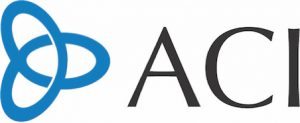SBA Provides More Guidance on How to Obtain Paycheck Protection Program Loan Forgiveness
The government continues to address the concerns of small businesses who have borrowed money through the SBA-backed Paycheck Protection Program (PPP). New guidance released over the holiday weekend offered more clarity about the conditions for loan forgiveness, while the U.S. House of Representatives yesterday passed a bill to provide more flexibility for borrowers.
The guidance made clear that only those payroll costs incurred and paid during the covered period of the loan, or incurred and paid before the next payroll period, count toward the forgiveness conditions. Loan money used to pay prior period payrolls isn’t eligible. This is in contrast to non-payroll costs. The new guidance says that non-payroll costs incurred before the covered period but paid by PPP money during the covered period are eligible.
One particularly important clarification is that bonuses and hazard pay are eligible for loan forgiveness, so long as they don’t exceed the pro-rated amount of $100,000 annual salary. This is invaluable for many firms with employees earning less than $100,000 who are trying to maximize their benefit. Giving 2020 bonuses early is a great way to achieve this. The firm benefits from the non-taxable loan forgiveness, while the employee benefits with an advance on their annual bonus.
More flexibility may come
The House bill gives PPP borrowers more discretion on how and when they spend the loan money while remaining eligible for loan forgiveness. The bill’s provisions would reduce the share of money that is required to be spent on payroll costs from 75 percent to 60 percent and would extend the period in which the businesses must use the funds from the original eight weeks, to six months. It also provides for a longer amount of time for borrowers to repay the loan, if necessary.
The bill now goes to the Senate for consideration. The Senate, which doesn’t meet again until next week, has been considering a similar bill, so we may see some agreement on these provisions sooner rather than later.
ACI working to maximize clients’ PPP benefits
ACI has been working with our clients to maximize the benefits of the PPP loans, and, more importantly, ensuring they meet the requirements. We are hopeful to formally complete all client SBA loan forgiveness forms by the end of July, enabling them to be free and clear of the PPP process.
More than 4.4 million loans, worth $510.5 billion, have been approved, leaving about $130 billion available for new borrowers. If you are considering applying for the PPP program, you still can do so. ACI is experienced in all facets of the process and ready to help you get through it with minimal stress. These are the program details:
Paycheck Protection Program loans explained
The CARES Act’s Paycheck Protection Program (PPP) allows qualified businesses with fewer than 500 workers to apply for a Small Business Loan to meet payroll costs. The loan is limited to the lesser of $10 million or the company’s average total monthly “payroll costs” for the 1-year period ending on the date the loan is made, multiplied by 2.5, plus any refinanced loan under the Economic Injury Disaster Loans (EIDL) program obtained after June 30, 2020.
Proceeds from a PPP loan may be used for payroll costs (as defined), employee benefits, interest payments on mortgages, rent, utilities, and interest on debt incurred before February 15, 2020.
A business can apply for loan forgiveness in an amount equal to the cumulative amount of payroll costs, rent, utilities, and interest paid on mortgages during the eight weeks after the loan is made. The amount forgiven is limited to the extent compensation and headcount are reduced relative to a base period, and any amount forgiven will not be taxable to the borrower.
ACI will continue to provide updates on our Resources page as the economy continues to emerge from the shutdown. We hope everyone is taking proactive and precautionary measures to remain safe.



